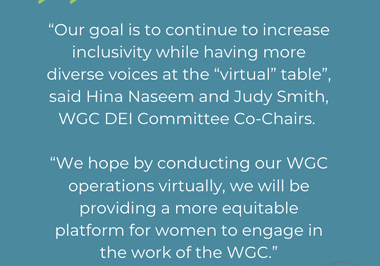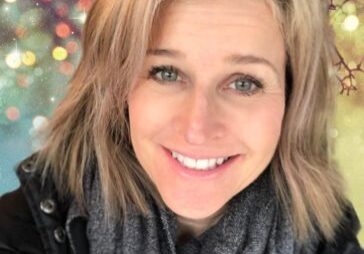Step one: Choose a cause that means something to you
By Beth Hauptle

For their inaugural year philanthropic project, members of the Young Women’s Giving Circle of the Women’s Giving Circle of Howard County are collecting and providing feminine products to county residents in need. Some 39 percent of young women don’t have access to period products and as a result, many miss school on those days of the month.
The spirit of philanthropy has been woven into the fabric of the United States since Andrew Carnegie began giving away huge sums of his money to causes he believed in. He wrote prodigiously to encourage his peers and those who followed to keep philanthropy a vital American value. Tax reform over the years has encouraged giving and today we see the enormous effects of large national and international nonprofits like the American Red Cross, American Heart Association, and United Way, to name a few.
Philanthropy on the local and regional level can be even more important to communities as nonprofits contribute to causes specific to the area in which they exist. Howard County is no exception and is the home to numerous nonprofit organizations serving a diverse array of community needs. Supporting issues ranging from animal protection, arts, education, and the environment to children, people with disabilities, the elderly, and those who go hungry, Howard County nonprofits make a difference every single day in the lives of its residents. All of these organizations are filling a gap or providing a needed service, and they need our support to achieve their missions. Cash donations, event attendance, in-kind donations, and volunteerism are all ways you can contribute to local nonprofits.
If you’ve never given before, how do you get started, how do you know what to support, and how can you be most helpful? We talked to a few Howard County nonprofit leaders who shared their thoughts about giving and receiving and also heard from a group of young ladies who got an early immersion in philanthropy.
A Junior Girl Scout troop from Dayton Oaks Elementary took on a Bronze Award project by organizing several drives to gather winter clothing and school supplies while working on badges related to financial literacy. Their goal was to share what they learned with girls at Cradlerock Elementary, a Title 1 School in Columbia. In December, the Dayton Oaks troop hosted a shopping spree at Cradlerock so the girls there could “buy” clothes and supplies with printed money, using their newfound budgeting skills.
“The girls had a great time at the event,” says Kecia Rome, mother of a fourth grader at Cradlerock. Her daughter, she says, was excited to wear her new clothes and receive new school supplies.
And the Girl Scouts uniformly reported a positive experience working with the Cradlerock girls. “Seeing them smiling afterwards really made me happy,” says Amaal Arain. “I loved hanging out with them.”
Teaching kids about the value and benefits of giving is certainly one way to kickstart good habits in philanthropy. Another way to jump in is through a giving circle. Groups like the Howard County Women’s Giving Circle pool their funds and decide together where to make their contributions. It’s a great way to learn about the needs of a community and the organizations serving those needs.
“There are so many benefits of giving through a giving circle—learning, listening, educating, networking, socializing—all with like-minded women,” says Barb van Winkle, chair of the Howard County group. But mostly, she says giving circles help to democratize philanthropy. By pooling their money, donors can have a greater impact than they might have alone. “It’s a powerful way to engage in giving and invest in women and girls in our community,” van Winkle adds.
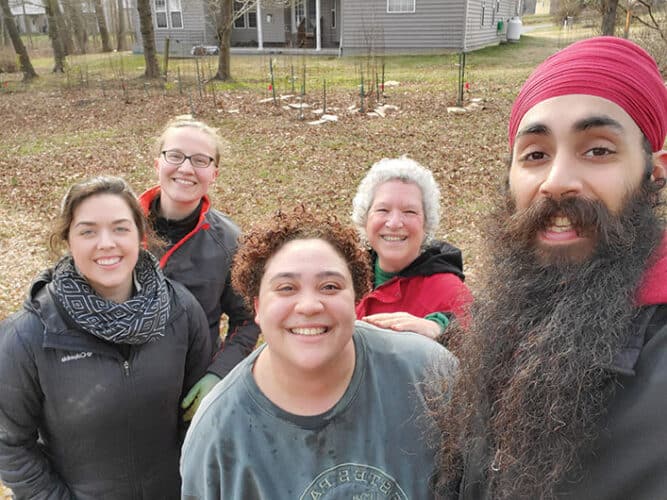
Left to right, HopeWorks office assistant Melissa Race, community engagement coordinator Victoria Rain, community engagement coordinator Maya Carey, volunteer Our Earth program leader Phyllis Yigdall, and community engagement coordinator Japjyot Singh.
Others choose to get involved by providing in-kind gifts (old cars, food, and clothing for example), or by donating their time as volunteers. Columbia-based HopeWorks provides support for people in Howard County who are affected by sexual and intimate partner violence. In addition to needing financial contributions, the organization relies on volunteers to provide on-site childcare for its clients, legal services, office assistance, help with special events, and outreach services, such as staffing booths at community health and wellness fairs. Executive Director Jennifer Pollitt Hill says that donating can help people feel part of a larger whole. At HopeWorks, donations can help survivors get access to the services they need to move forward with their lives, she says. “And it also helps to create a better, safer culture that benefits all of us.”
Susan Stuart, Annual Campaign Director of the Howard County Jewish Federation, agrees that getting involved is the best way to learn about what an organization does and often inspires people to share their passion for the cause with others. “I highly recommend taking the step to donate or get involved with a nonprofit organization,” Stuart says. “Pay it forward—you never know what life holds for you in the future.”
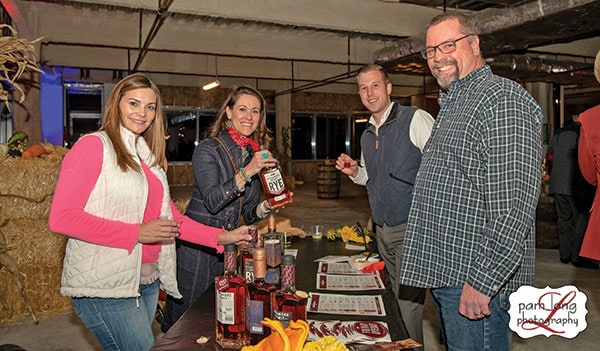
One of Blossoms of Hope’s signature fundraisers is Beer, Bourbon and Bags.
Attending events is another way to embrace philanthropy; events can range from small fundraisers to large galas. Blossoms of Hope—a nonprofit committed to both beautifying Howard County by planting cherry trees and raising funds to help those affected by cancer—hosts a number of events to draw in donors. Signature happenings like Beer, Bourbon and Bags, the Pretty in Pink fashion show, and a 5K and Family Run bring both friends and funds into the fold.
As donors get more involved with organizations, some will make a bequest, giving assets such as stocks, bonds, jewelry, and cash through the provisions of a will or an estate plan. This type of giving could provide a great source of income for nonprofits as baby boomers will be passing on some $30 trillion over the next 30 years or so. Bequests are helpful to both nonprofits and their donors as they and their heirs may receive considerable tax benefits.
The first step when it comes to stepping up is figuring out which organizations are a good match for you.
HopeWorks’ Pollitt Hill advises potential donors to choose a cause that inspires you, or is closely aligned with your values. This may be an organization that helped you in the past, or one you wish you had known of.
Susan Stuart of the Jewish Federation advises choosing an organization that is close to your heart. “Find a cause that means something to you,” she says. “Then check out their website to find out their mission and the type of programming they do.”
Nette Stokes is the founder of JustLiving Advocacy, Inc., an organization providing opportunities to single parents who need a helping hand. “Follow your heart and passion,” she suggests. “If the mission of the charity pulls on your heart strings and you believe in their cause, then please give.” Most charities are established to help others in need, Stokes points out. “With that understanding, no donation is ever too small.”
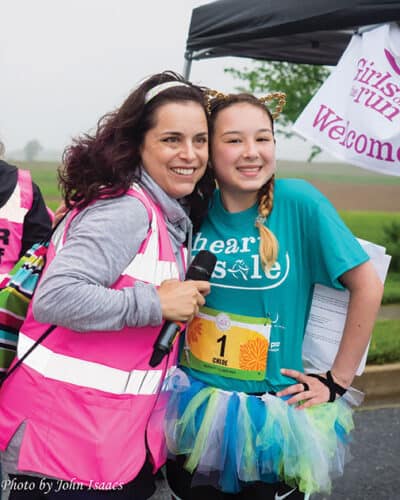
Jessamine Duvall, Executive Director of Girls on the Run Central Maryland, congratulates a young race participant.
Jessamine Duvall, Executive Director of Girls on the Run Central Maryland suggests that once you find an organization you feel connected to, it’s important to do your research. Nonprofit organizations are most commonly recognized by the IRS as 501(c)(3) tax exempt organizations and are required to file an IRS form 990 annually, she says. “This document is public record and must be provided to donors upon request.” In addition, she says, “Websites like Guidestar.com or Charity Navigator make it easy for donors to do research on charities before making a donation.”
On the other side, nonprofits are invested in cultivating and motivating current and prospective donors. The key to reaching people, says Duvall, is storytelling. “Tell a good story that resonates with your audience, while illustrating the impact of your organization,” she suggests. When talking with a prospective donor, she starts by asking them why the Girls on the Run mission resonates with them—and shares how it resonates with her. “If you tell a great story and speak from the heart about your cause, people can tell that you care,” she says. It’s also important to have data that supports your cause and demonstrates effectiveness, Duvall adds. “Donors want to make sure their money will be put to good use.”
Girls on the Run’s mission is to “encourage pre-teen girls to develop self-respect and healthy lifestyles through dynamic, interactive lessons and running games.” It offers 10-week sessions that culminate in a 5K run. Duvall says she has heard countless stories about the impact Girls on the Run has made on girls who are painfully shy, who feel marginalized due to a disability, or who have experienced trauma. “We frequently hear from coaches and parents about how a girl has ‘blossomed’ over the course of the season,” she says.
Nette Stokes points out that it’s all about partnerships. Donors and volunteers become partners in an organization’s mission to serve and help others, she says, “Giving hope, changing lives, and strengthening communities where we all can thrive together.”
Blossoms of Hope
blossomsofhope.org
Blossoms of Hope enhances quality of life through beautification projects and support for cancer and other causes. The organization hosts lively fundraising events such as Beer, Bourbon and Bags, Power of the Purse, BOH 5K and Family Fun Run, and Cherrybration Kick-Off.
Girls on the Run
gotrcentralmd.org
Girls on the Run inspires girls to recognize their inner strength and celebrate what makes them one of a kind. A ten-week program, including a service project and 5K run, helps girls in third through eighth grade navigate their worlds and establish a lifetime appreciation for health and fitness.
Hopeworks
wearehopeworks.org
HopeWorks’ mission is to provide support and advocacy for people in Howard County affected by sexual and intimate partner violence and engage the community in creating the change required for prevention.
Jewish Federation of Howard County
jewishhowardcounty.org
The Jewish Federation of Howard County is a community-driven organization committed to taking care of the needs of the Jewish people and building a vibrant Jewish future in Howard County. Its annual campaign raises funds to provide for those in need and offers programming that builds community and enriches Jewish life.
JustLiving Advocacy
justlivingadvocacy.org
JustLiving Advocacy seeks to improve, strengthen, and enrich the lives of women who are single parent head of households and to lead their families towards long-term self-sustainment through providing childcare services, heart disease advocacy, employment referrals, and more.
Women’s Giving Circle of Howard County
womensgivingcircle.org
The Women’s Giving Circle’s mission is to build a community of philanthropists and create a permanent legacy to address the needs of women and girls in Howard County.


